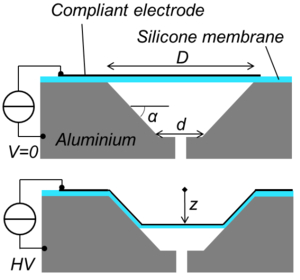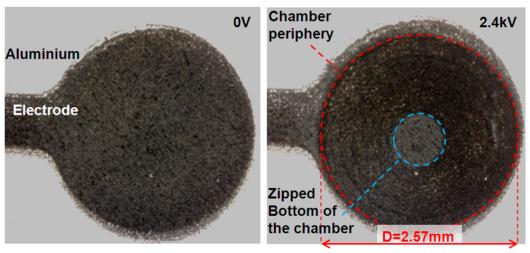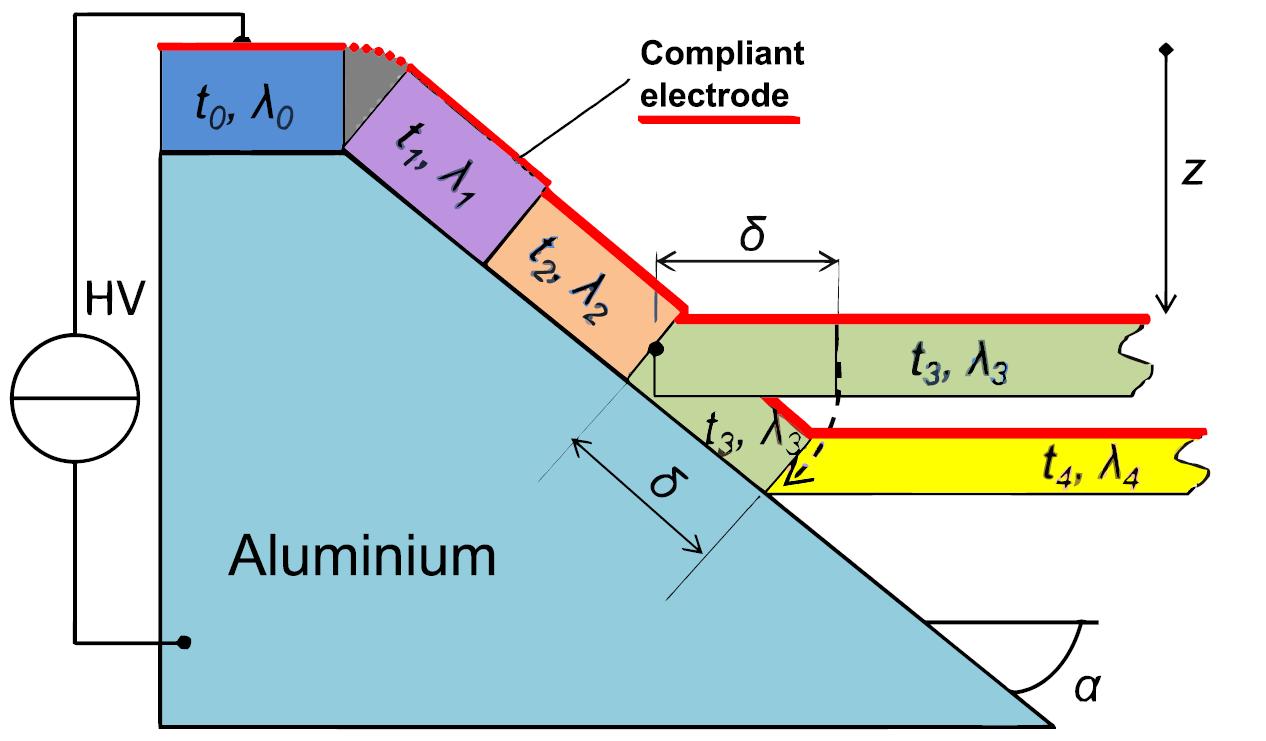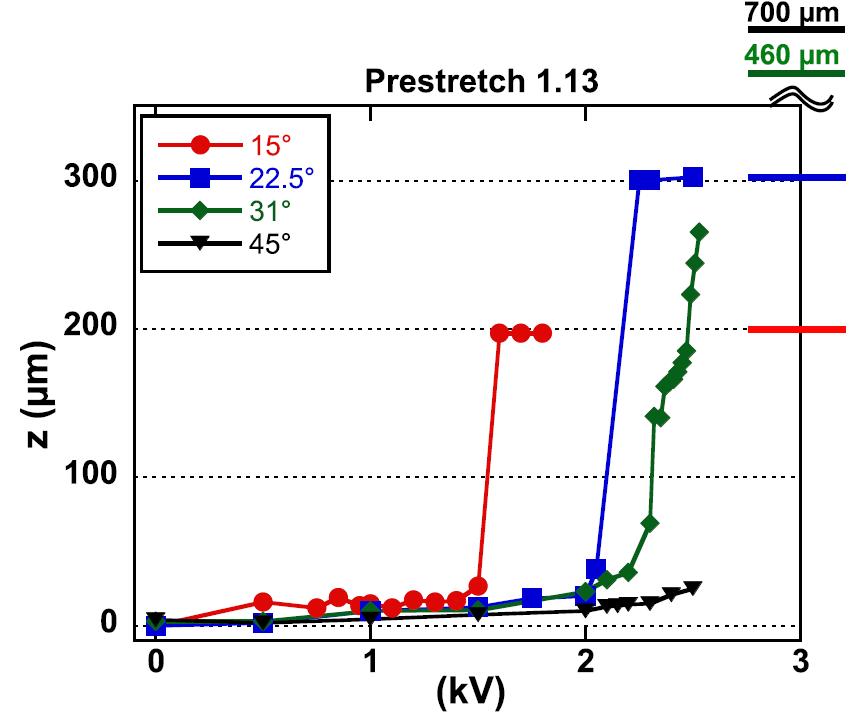A novel DEA actuation mode offering unique properties
We study miniature dielectric elastomer actuators (DEAs) operating in zipping mode. Electrostatic zipping is a well-known mechanism in silicon MEMS to obtain large deformations and forces at lower voltages than for parallel plate electrostatic actuation. We extend this concept to DEAs, which allows us to obtain much larger out-of-plane displacements compared to silicon thanks to the softness of the elastomer membrane. Remarkable specific characteristics of zipping DEAs include well-controlled deflected shape, tunable displacement versus voltage characteristics to virtually any shape, including multi-stable modes, sealing of embedded holes or channels for valving action and the reduction of the operating voltage.
Operating principle

Cross-section of a zipping DEA
Unlike the conventional DEA actuation mechanism, the elastomer membrane of a zipping DEA is not squeezed by the electrostatic force between two compliant electrodes, but rather a single soft electrode is attracted toward a fixed one.

Top view of a mm-size zipping DEA
The electrostatic forces zip down a 20 micrometer thin silicone membrane inside a conical cavity. The printed compliant electrode is made of carbon black dispersed in a soft silicone matrix.
The following video shows the very fast zipping process, followed by the much slower “un-zipping” due to the adhesive forces of the silicone membrane on the chamber walls.
Embed of video is only possible from Mediaspace, Vimeo or Youtube
Analytical modeling

An analytical model based on electrostatic and mechanical stretch energies has been built
Predicting the behavior of zipping DEAs is challenging because the zipped membrane thickness and stretch state is not homogeneous. We proposed an analytical approach based on energy contributions, which outputs the deflection versus voltage characteristic of a zipping DEA.
Tunable bistable behavior

The vertical deflection z in fuction of the applied voltage
The vertical deflection z in function of the applied voltage in conical chambers is clearly bistable. On this set of devices, we show that the zipping jump position can be tuned by the sidewalls angle alpha. Device diameter 2.2mm, pretretched thickness 25 micrometers.
For additional info, contact Luc Maffli
Main publications on the zipping actuation mode
Please note that the publication lists from Infoscience integrated into the EPFL website, lab or people pages are frozen following the launch of the new version of platform. The owners of these pages are invited to recreate their publication list from Infoscience. For any assistance, please consult the Infoscience help or contact support.